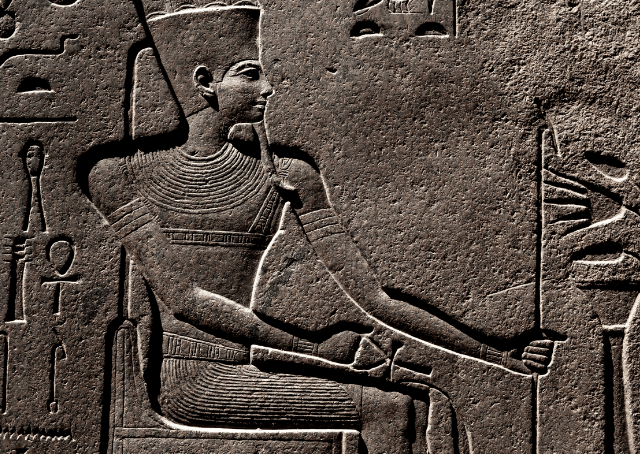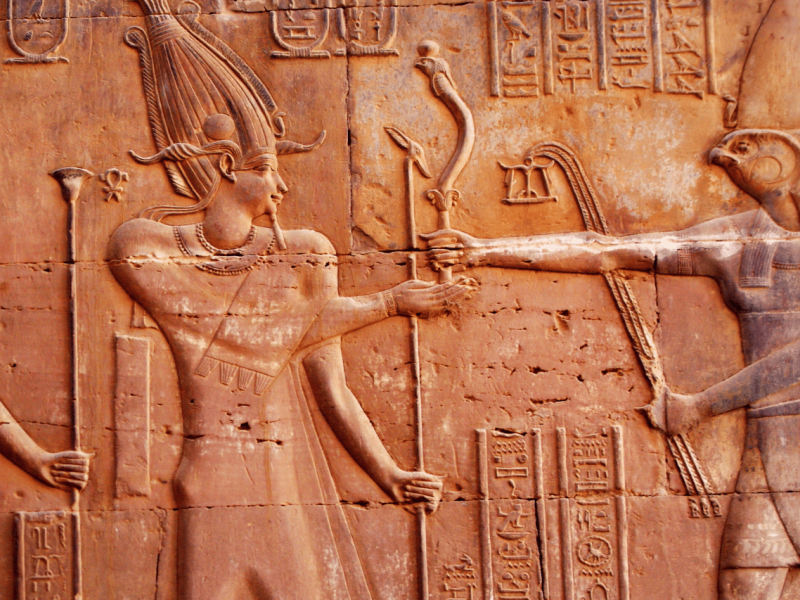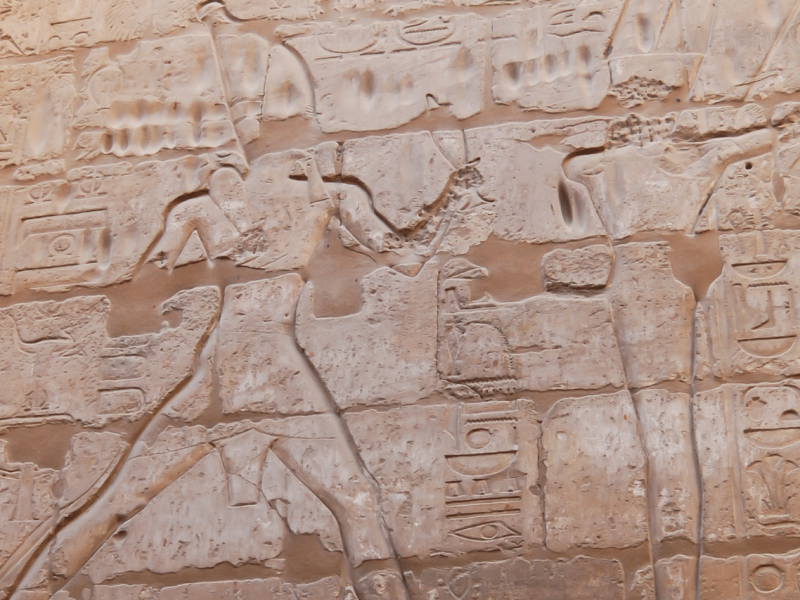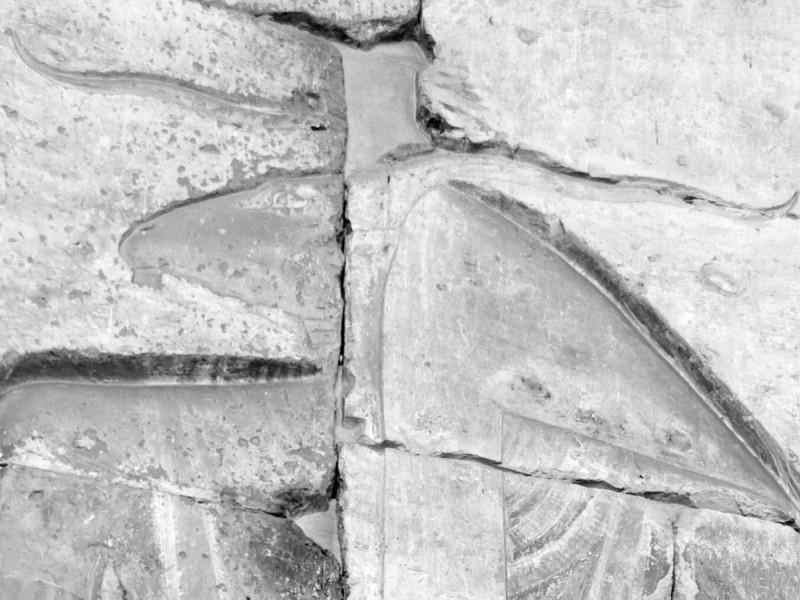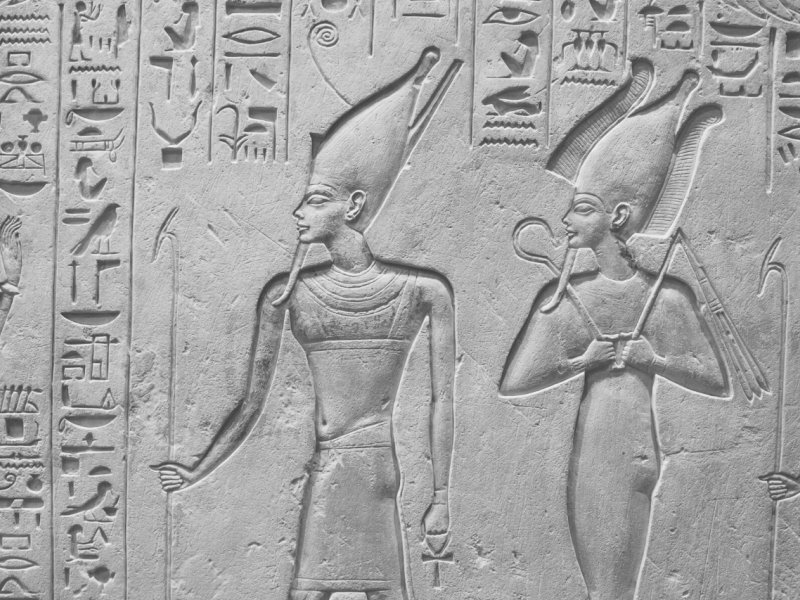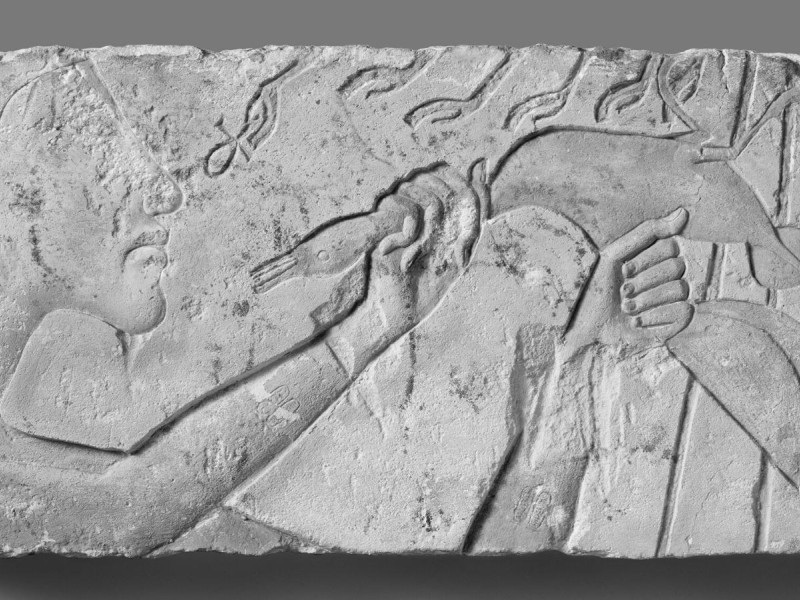Amun
Amun: The Ancient Egyptian King of Kings and Lord of All
The story of Amun in Egyptian mythology is one of the most interesting ones.
He started as a local deity and rose to prominence as a major god. He ascended as chief of the gods, but eventually, his worship and status collapsed in the beginning of the Common Era.
Learn more about him through this article.
Who Was Amun in Egyptian Mythology
Amun was one of the primary gods of the Egyptian pantheon, regarded as the Lord of all creation and King of Gods. Originally appearing as a local deity of the city of Thebes during the Old Kingdom (circa 2700 BC), Amun rose to prominence as the chief of all of the gods over the next thousand years, and all other deities became mere aspects of his nature.
Initially considered a fertility deity that later came to be identified with the sun and the air, Amun became the representative of the pharaoh and Egypt. His worship became nearly monotheistic by the New Kingdom period (1550 – 1070 BC) before collapsing during the Ptolemaic Dynasty (305 – 30 BC).
Worshipped throughout the Mediterranean as far away as Greece and Libya, more information exists regarding Amun than any other Egyptian deity.
Depictions of Amun in Egyptian Artwork and Literature
Due to the importance of Amun in Egyptian religious life, depictions of him were nearly universal throughout the Egyptian empire.
Originally depicted as a man with a large thick beard (symbolizing virility, sovereignty, and maturity) who wore a double plume headdress by the New Kingdom, representations of Amun became more dynamic, with Amun’s skin sometimes being presented as blue to illustrate his ability to become invisible, thus reflecting the seen and unseen worlds.
During the New Kingdom period, Amun came to be depicted as a man with a ram’s head (assimilating the powers and aspects of the Nile god Khnum), taking on the symbolic role of a virile god of creation.
After Egypt became highly influenced by Greek Hellenization during the Ptolemaic Dynasty (305 – 30 BC), statues of Amun began to take on otherworldly forms. Images of Amun appeared with the god having the long beard of Egyptian royalty but with four arms, a scarab’s body, a falcon’s wings, a man’s legs, and the feet and nails of a massive lion.
Additionally, Amun was able to take many forms. Some of the most well-known were a snake that could renew itself by shedding its skin, a laughing goose, a highly sexualized ram, a frog, the royal cobra (Uraeus), a baboon, and a crocodile.
The Meaning and Variations of Amun’s Name
Unlike most other Egyptian gods whose names stemmed from verbs or plays on existent words that revealed their natures, Amun’s name was more enigmatic. It meant “mysterious of form,” “invisible,” “the hidden one,” and “The Concealed God.”
There were multiple spellings of his name: Ammon, Amen, and Amon. After the Old Kingdom period, Amun was elevated to the level of a state-sponsored god of Thebes. He began to assimilate the characteristics of lesser deities and incorporated their names into his own.
Over the centuries, these names became titles, reflective of the belief that other gods were simply aspects of Amun. Examples of this are the names Amun-Ra (Amon-Ra), Amun-Min, and Amun-Khnum.
John Gardner Wilkinson, the famed pioneer of Egyptology, wrote, “the Egyptians themselves called him Amun asha renu – Amun Rich In Names – and the god can only be fully understood in terms of the many aspects which were combined in him.”
The ancient Egyptians believed that Amun’s nature was both visible and invisible, as he was symbolic of the sun and the air. While the sun was visible in the sky, it could not be touched, and the air was not visible but could be felt. As The Concealed God, Amun was reflective of this dynamic of personifying the Egyptian concept of duality, believed to be everywhere and the lord of all.
Amun, the Local God of Thebes
Before coming to be regarded as the chief god of ancient Egypt, the story of Amun began with him recognized as a local deity of Thebes during the Old Kingdom period (2700 – 2200 BC). In the Pyramid Texts, Amun reigned as a lesser god alongside his consort Amaunet, serving as a fertility god within the Ogdoad (the eight Theban gods who represented the elements of creation).
During the Old Kingdom, the war god Montu was considered the chief deity of Thebes, and the self-created god Atum was worshipped as the lord of creation and of the sun. During this time, Amun was considered equal with the other seven gods of the Ogdoad.
Sometimes mentioned as an aspect of Ra (called Amun-Ra), Amun-Ra and Amunet held a minor role in the Ogdoad, with their cult operating as a minor fertility cult designed to bring prosperity to the land.
The gods of the Theban Ogdoad represented primordial creation, taking on easily understood identities such as water (the gods Nun and Naunet) and darkness (Kuk and Kuaket). However, Amun was not as easily identifiable and much more mysterious. Known as The Obscure One, he represented hiddenness and the invisible world that moved behind the scenes.
Clearly defined gods, such as Kuk and Kuaket, who represented darkness, had a clear role in creation. Amun had no such distinction. Amun could be worshipped as whatever needed to be worshipped, as he was the expressed nature of the unknowable.
Amun’s Worship and Status Grows
Because of his mysterious nature, Amun eventually came to be regarded with favor by the Egyptian people. As the Middle Kingdom (2050 – 1780 BC) began, Amun became worshiped as part of the Theban Triad, with his wife Amunet being replaced by the lioness Mut and their son Khonsu, god of the moon.
After the Hyksos invasion of Egypt and during the Second Intermediate Period (1800 – 1525 BC), the war god Montu lost the favor of the Egyptian people. He was believed to have allowed the Hyksos people to topple and subjugate Thebes.
During this time, a son of the royal Theban house, Ahmose I, raised an army and defeated the Hyksos, driving them from Egypt. Ahmose I, becoming pharaoh, credited his ascendency and battle prowess to Amun, linking him with the solar deity Ra.
Amun’s nature was mysterious, changeable, and not easily defined, Amun was whatever the people and pharaoh needed him to be. In linking Amun with Ra, Ahmose I declared Amun not an aspect of Ra, but Ra an aspect of Amun, with Amun absorbing Ra’s aspects (and thus Atum, as Ra had previously assimilated Atum’s characteristics as his own).
Amun-Ra was now declared the King of kings and worshipped as the creator god of the cosmos.
Amun, God of All That Exists, Existed, and Will Exist
By the time of the New Kingdom (1520 – 1075 BC), the ascendency of Amun as chief of the gods was complete. By absorbing Ra’s and Atum’s aspects (even though Atum was still worshipped as a much lesser deity), Amun was considered the god of all creation, who was self-created and mated with himself to create the world, and responsible for the working of the seen and unseen worlds.
The Temple of Amun-Ra at Karnak soon became the wealthiest temple complex in Egypt’s history, rivaling the wealth of the Kingdom of Egypt itself, where Amun-Ra came to be worshiped as nearly a monotheistic deity. Even today, Amun-Ra’s Temple at Karnak, when connected to the Southern Sanctuary of the Luxor Temple, is considered the largest religious structure ever built in the Earth’s history.
A floating temple dedicated to the Egyptian god Amun-Ra was even created, known as Userhetamonra, meaning Mighty of Brow is Amun-Ra. Much like the solar barque that was believed to daily cross the sky, Egyptologist Margaret Bunson wrote that “Amun-Ra’s barque was covered in gold from the waterline up and was filled with cabins, obelisks, niches, and elaborate adornments.”
During the annual Feast of Opet, Amun’s barque would be sailed down the Nile from Karnak to Luxor, with the Amun statue placed in the center to survey his domain. Userhetamonra would also be used throughout the year for other smaller ceremonies, and when not in use, would remain in a specially designed temple that housed the floating wonder.
At his cult centers throughout Egypt, Amun-Ra’s priests expounded the belief that all of creation and every other deity that had been worshipped in Egypt’s history were mere aspects and different shards of the whole that was Amun-Ra.
Egyptologist Geraldine Pinch wrote of Amun-Ra’s growing cult and status –
“In his chief cult temple at Karnak in Thebes, Amun, Lord of the Thrones of the Two Lands, ruled as a divine pharaoh. Unlike other important deities, Amun does not seem to have been thought of as living in some distant celestial realm. His presence was everywhere, unseen but felt like the wind. His oracles communicated the divine will to humanity. Amun was said to come swiftly to help Egyptian kings on the battle field or to aid the poor and friendless. When he was manifest in his cult statues, Amun periodically visited the necropolis of Thebes to unite with its goddess, Hathor, and bring new life to the dead.”
Never before in Egypt’s history had one god been granted so much power. But with this came an unforeseen danger that nearly changed Egypt forever.
The Rise of Akhenaten, Amun’s Greatest Threat
By the midpoint of the New Kingdom period, the wealth of Amun-Ra’s temple and priests was truly astounding, rivaling (if not greater than) the pharaohs of Egypt. Amun-Ra’s temples were decked out in splendor throughout Egypt, with livestock, gold, and massive amounts of land given to Amun’s priests, affording them opulent lifestyles.
Amenhotep III, who ruled from 1390 – 1353 BC, began to enact several religious reforms to combat the power of Amun-Ra’s temples, as the high priests of Amun-Ra held almost as much sway with the people as he did. Believing that it was he who was descended from the gods, Amenhotep III considered the public influence and the might of Amun-Ra priests as sacrilegious because the pharaohs were believed to be living gods themselves.
Amenhotep III claimed that the minor deity Aten (the solar disk that represented the sun) was his chief patron to combat the power of Amun-Ra’s priests. He called on the people of Egypt to worship Aten congruent with Amun-Ra.
Instead, the priests and people of Egypt worshipped Aten as a mere aspect of Amun-Ra. However, instead of diminishing the power of Amun-Ra, Amenhotep III inadvertently increased the power of the god and his priests, contributing even more of the wealth of the royal house to Amun.
This would all change dramatically when Amenhotep III’s son, Amenhotep IV, took the throne in 1353 BC.
For the first few years of Amenhotep IV’s reign, the pharaoh continued to encourage Egypt to worship Aten alongside Amun-Ra as equals, following the religious reforms put in place by his father. However, in 1348 BC, Amenhotep IV made a drastic move to curb the power of Amun-Ra’s temples and priests, nearly collapsing Egyptian society in the process.
In the fifth year of his reign, Amenhotep IV changed his name to Akhenaten (meaning great use to the god Aten) and declared Aten as the one true god. Over the next few years, every temple dedicated to every other god in Egypt was closed, their wealth seized, and their priests removed from their duties.
Worship of Amun-Ra was expressly forbidden, with the names and images of Amun-Ra desecrated throughout Egypt. The capital city of Thebes was abandoned as Akhenaten moved his capital to Akhetaten.
Restoration of Amun-Ra as Chief Deity of Egypt
Public worship of Amun-Ra brought swift persecution from Akhenaten, sending Amun-Ra’s former priests into hiding. With the closure of Egypt’s temples, however, Egyptian life began a swift decline.
As the lives of the ancient Egyptians were built around their religion, the temples of the gods were not just places of worship. They were also places of societal function. Temple complexes housed medical facilities, food storage and distribution, places to procure needed goods and services, and were sources of employment for Egypt’s people.
With the temples closed, particularly those of Amun-Ra, Egyptian society quickly collapsed, with even the military devalued and ceding territory to encroaching enemies.
After Akhenaten’s death in 1336 BC, Tutankhaten assumed the throne and immediately changed his name to Tutankhamun, offering the priests of Amun-Ra his fealty. Quickly re-establishing the former religious traditions of Egypt, Tutankhamun set himself to removing all references to Aten, going so far as to erase the name of his father Akhenaten from existence.
The Collapse of Amun-Ra’s Reign as Chief of the Gods
After his restoration as the chief deity of Egypt, the cult of Amun-Ra again took prominence over Egypt. It grew in strength throughout much of the Third Intermediate Period (1075 – 525 BC). Disaster struck, however, in 666 BC as the Assyrian military ransacked Thebes, severely crippling the formal worship of Amun-Ra.
During this period, the Cults of Isis and Osiris began to rise in Egypt, and the god Amun began to cede his creative and cosmic attributes to these other deities. As the power of Thebes declined due to the Assyrian invasion, so did the power of Amun-Ra’s priests, who began to seek out power elsewhere.
Over the next few centuries, the priests of the Cult of Amun-Ra sought to establish new centers in Sudan, which allowed them to grow their power and again rival local kingdoms. This continued until 285 BC, when King Ergamenes of Meroe moved to consolidate his power and massacred the priests of Amun-Ra, driving Amun’s worship from Sudan.
While worship of Amun-Ra was still common throughout Egypt, he was no longer thought of as an all-encompassing deity that ruled over the universe. Cult centers of Amun-Ra still flourished, but these centers were mere shadows of the massive temple complexes that had existed before, having little of the wealth and prestige that marked Amun-Ra’s reign as king of the gods.
In 88 BC, the Hellenistic king of Egypt, Ptolemy IX, seeking to destabilize Egyptian nationalism to legitimize his reign as pharaoh, attacked Thebes. The death knell for the Cult of Amun was sounded, as Amun’s temples were crushed and what little wealth remained was seized.
The final nail in the coffin of Amun’s reign as a major god came in 27 BC, as a massive earthquake obliterated what was left of Thebes’ temples, leaving Amun without a centralized place of worship.
While still worshipped as a minor god of protection and of travelers during the next five centuries, the veneration of Amun held little significance over the Egyptian people.
While the cults of Isis and Osiris thrived, Amun faded more and more into the background, until nearly being forgotten entirely, as all of the gods of Egypt were, with the rise of Roman Christianity in the 3rd century AD.
Amun, the Local God Who Became Chief Deity of the Egyptian Pantheon
Amun was regarded as one of the primary gods of the ancient Egyptian pantheon. Known as the Lord of all creation and King of Gods, he first appeared as a local Theban deity during the Old Kingdom.
Over the next thousand years, he rose to prominence as the King of all gods, where all other deities became mere aspects of his nature.
Originally a low-ranking fertility god, by the Middle Kingdom period Amun became part of the Theban Triad, and after Ahmose I repelled the Hyksos from Egypt, Amun became known as the King of all gods, self-created deity of the cosmos
Amun was often presented as a human male with a long royal beard with blue skin
Other depictions of Amun present him as a virile ram, a snake, a goose, a frog, a royal cobra, a baboon, and a crocodile
During the Ptolemaic Dynasty, Amun was depicted with the long beard of Egyptian royalty but with four arms, a scarab’s body, a falcon’s wings, a man’s legs, and the feet and nails of a massive lion
Amun’s name meant “mysterious of form,” “invisible,” “the hidden one” and “The Concealed God”
During the Middle Kingdom, Amun (also spelled Ammon, Amen, and Amon) began to incorporate the names of lesser deities, such as Amun-Ra (Amon-Ra), Amun-Min, and Amun-Khnum
As the King of all gods, Amun’s priests declared that all gods were aspects of Amun, as he was the self-created deity that mated with himself to create all other gods from himself
Threatened by the power and wealth of the priests of Amun-Ra, the pharaoh Akhenaten declared that Aten was the true god in 1348 BC, seizing the wealth of the temples of Amun and persecuting his followers and priests
After the death of Akhenaten, worship of Amun-Ra and the Egyptian pantheon was restored by Tutankhamun
In 666 BC, the Assyrians sacked Thebes, leading to a decline in the worship of Amun
By the Ptolemaic Dynasty, worship of Isis and Osiris took center stage, with Amun relegated to a background role in the Egyptian pantheon
Worshiped as the god of gods and king of kings, Amun-Ra’s power and might were unrivaled throughout Egypt’s history before collapsing near the beginning of the Common Era.
Yet Amun’s name lives on as the most written of deity in Egypt’s history, kept alive by the tombs, temples, and statues that still bear his mighty name – Amun-Ra,” The Concealed God.”
